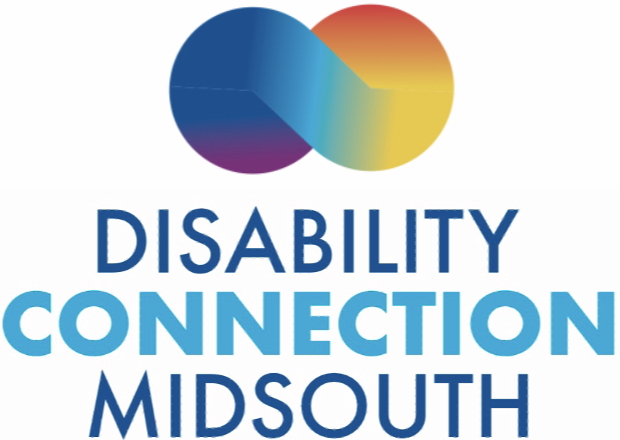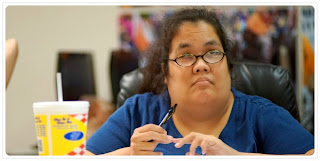By Christina Clift
#Howeyeseeit is a fundraising campaign launched this summer by the Foundation Fighting Blindness that challenges sighted individuals to blindfold themselves and perform everyday tasks like tying their shoes, taking their children to the park, cooking and counting money. According to the Foundation’s website the campaign raised $100,000.00 which will be used to continue to search and develop a cure for retinal diseases such as Retinitis Pigmentosa. However, I believe that the good done by raising this money was outweighed by the long term damage and harm done to the Blind community.
The fundraising campaign has also outraged thousands of individuals who are blind across the United States. In Fact, the National Federation of the Blind launched its counter-campaign by having its members post videos doing everyday tasks and thus demonstrating their skills and competence as individuals who are blind to live their own lives.
So what was wrong with the Foundation Fighting Blindness #Howeyeseeit campaign? This campaign reinforced beliefs by many that being blind is something to fear, that people who are blind lives would be full of misery, frustration and that individuals who are blind require assistance to perform menial everyday tasks like fixing meals. The resulting videos starring blindfolded individuals played to the long held stereotypes which exist in society and the videos were often viewed with humor, derision and pity.
The videos promote the misconceptions of the general public about being blind and lead to lower expectations of people who are blind. On their website the Foundation states that more than 58 million people participated in the campaign and that is 58 million people who did not see individuals who are blind portrayed as intelligent, independent, or capable.
Before coming to work at the Memphis Center for Independent Living (MCIL) and joining the National Federation of the Blind (NFB) I used to believe that activities like this were okay, but I now know what harm imitation can do. There has been a lot of research done on these types of simulations. A blindfold simulation by a sighted person will never be accurate. Arielle Silverman conducted blindness simulations as part of her research for her Ph.D. program at the University of Colorado. Several individuals were blindfolded, while several were not. The individuals that were blindfolded left the activity with the perception that individuals who are blind are less able to hold down basic professional jobs and were less able to live independently. This simulation did absolutely no good for those with visual impairments.
“Blindfolding yourself is not much like living with blindness,” Ms. Silverman said. “When people develop permanent blindness, they get used to it. Research shows that most people who develop disabilities eventually adjust. The fear, frustration and distress go away over time. It is just part of the human condition to adapt to any new circumstance. Further, when people become blind, they learn techniques and adopt tools, such as the white cane, that give them independence.”
Simulation does not help sighted individuals adjust to a real disability. I will say that there are a few occasions, that disability can be productively simulated, but they require lots of thought and planning to carry out appropriately.
Some people might also want to compare the #Howeyeseeit videos to the Ice Bucket challenge that was done to raise money for individuals with ALS. The distinct difference between these two social media campaigns is that individuals participating in the ice bucket challenge were not acting like they had ALS. Furthermore, it did not demean the capabilities of people with ALS or create a sense of fear about living with the disease.
"The National Federation of the Blind is deeply concerned that the #HowEyeSeeIt challenge, as currently structured, will do lasting harm to the ability of millions of Blind Americans to live the lives we want,” said Mark A. Riccobono, President of the National Federation of the Blind in September. “In encouraging people who are not blind to don blindfolds and make videos of themselves attempting everyday tasks, this campaign perpetuates the fears, misconceptions, and low expectations that society has about blindness by giving those who take the challenge or view the videos an inaccurate understanding of the lived experience of Blind people."
"In particular," continues Mr. Riccobono, "suggesting that it is difficult or impossible for blind parents to care for their children is false and irresponsible. As a blind father of three children who also happens to be married to a blind person, I can say unequivocally that, with non-visual techniques, we can, and do, capably parent thriving children every day. Yet children have been removed from the custody of blind parents solely because of misconceptions about their ability to care for them, without any actual proof of abuse or neglect, and the #HowEyeSeeIt campaign threatens to worsen this already grave problem. This is only one example of how this campaign will harm the chances of Blind people, including board members and supporters of the Foundation Fighting Blindness, to live productive and happy lives.”
"To be clear, we have no quarrel with the Foundation Fighting Blindness or the medical research that it seeks to fund," said Mark Riccobono. "However, we believe that this particular method of gathering support will harm the very people whom the Foundation Fighting Blindness and the National Federation of the Blind, in different but complementary ways, seek to help. I and other members of the National Federation of the Blind have told the Foundation Fighting Blindness that the perpetuation of misconceptions about, and by extension discrimination against, the Blind is unacceptable, but so far we have been ignored. We therefore demand that the Foundation Fighting Blindness stop filling its coffers by spreading misconceptions and jeopardizing the dreams and aspirations of Blind people."
I believe that the Foundation Fighting Blindness should highlight the strengths, abilities, showcase stories of successful Blind individuals, and discuss the required training and non-visual techniques used in everyday life. People who are blind use assistive technology like money identifiers to count their money, they use non visual techniques to cook meals, and use adaptive techniques like putting bells on the shoes of their children to help track where they are. They learn to use a white cane for independent mobility, braille to read and write with, screen reading software to access their e-mail and computer, and are able to safely raise healthy, happy children. This method would not use fear of being blind to raise money and would educate the public simultaneously.
The Foundation Fighting Blindness placed on their website the following statement:
We acknowledge and are sensitive to the concerns expressed by the National Federation of the Blind that the challenge activity may have reinforced unfounded and negative stereotypes about blind people. The purpose of the blindfold experience was to increase participants’ appreciation for two things: the gift of sight and the skills and strengths of their family members, co-workers, friends and neighbors who live their lives productively with low or no vision.
I do not view my sight as a gift. You can either see or not. You don’t receive sight for Christmas or birthday, you don’t lose it for bad behavior, and it’s not the characteristic that defines me or my future, it’s merely a characteristic of who I am. To call it a gift implies that being able to see is something special. Yes, I appreciate the remaining vision that I have, but I will be okay if I lose it.
On October 15, 2016 the Foundation Fighting Blindness will hold its annual Vision Walk in Memphis. It is my hope that people who are blind, their families, community organizations, and sighted peers will turn out and tell them to stop this campaign. Other ways you can help is by posting a video countering these negative stereotypes, donating to organizations like MCIL or the NFB, and by educating yourself by talking to a person who is blind in your community.
EDITOR’S NOTE: The Memphis Center for Independent Living believes the in using “people first” language. Often you will note in this article “the Blind” and "Blind people" are used in an apparent contradiction to the strict person-first ideal. MCIL recognizes cultural exceptions to the people first guide. You may be familiar with "Deaf" with a capital D used by most people who are deaf. The capital “D” denotes a cultural identity surrounding a signed language and a set of cultural norms separate from the mainstream local culture. People who are deaf who capitalize the D see their deafness as more than just a physiological state, also as an identity. The same applies for people who are deaf-blind and for some people who are blind who, while sharing a language in common with the mainstream, may feel necessary assert a specific community identity.




No comments:
Post a Comment